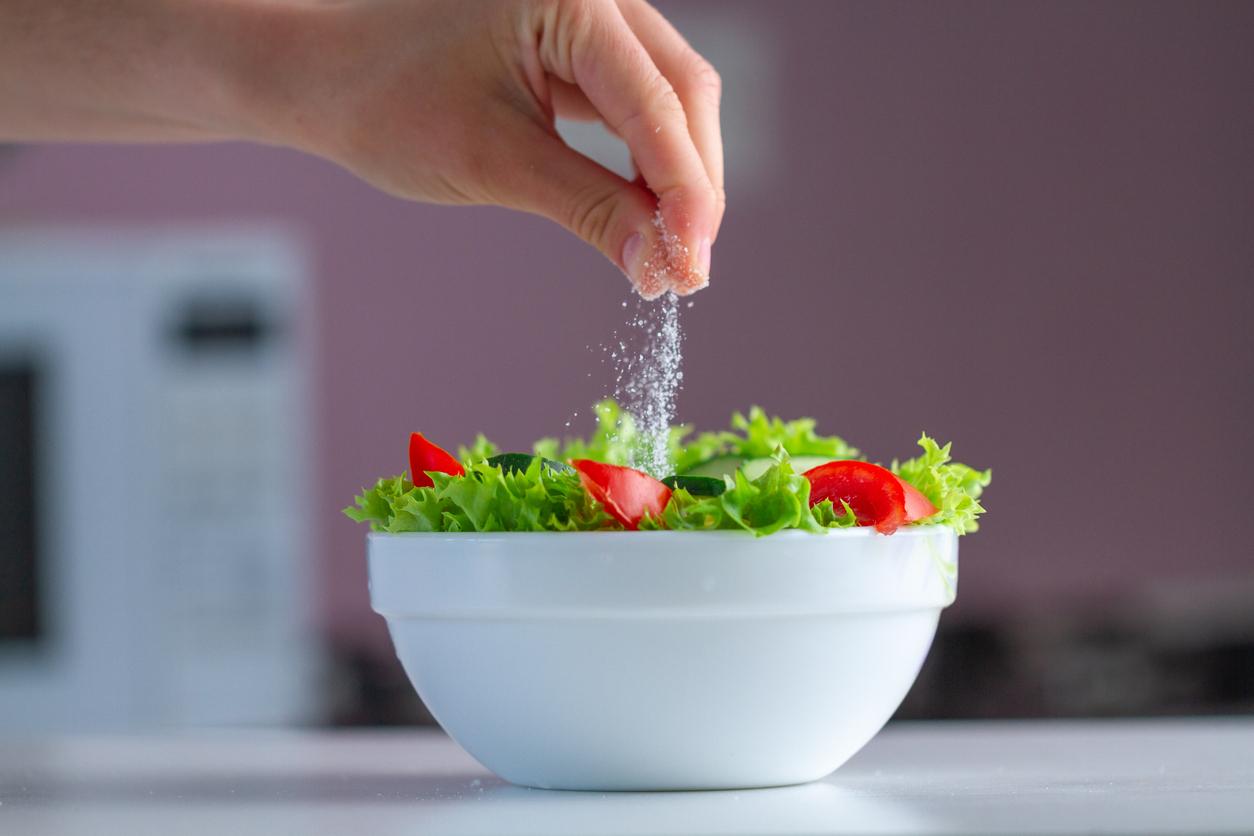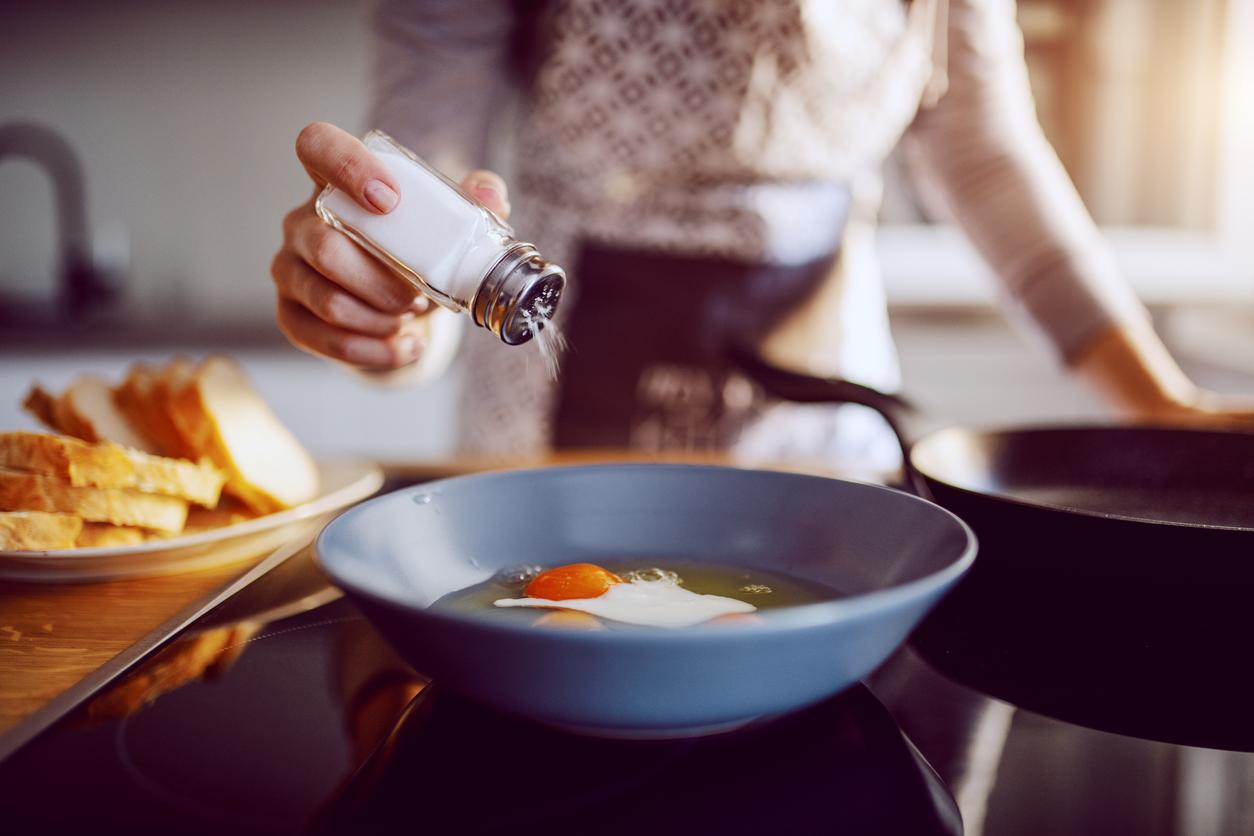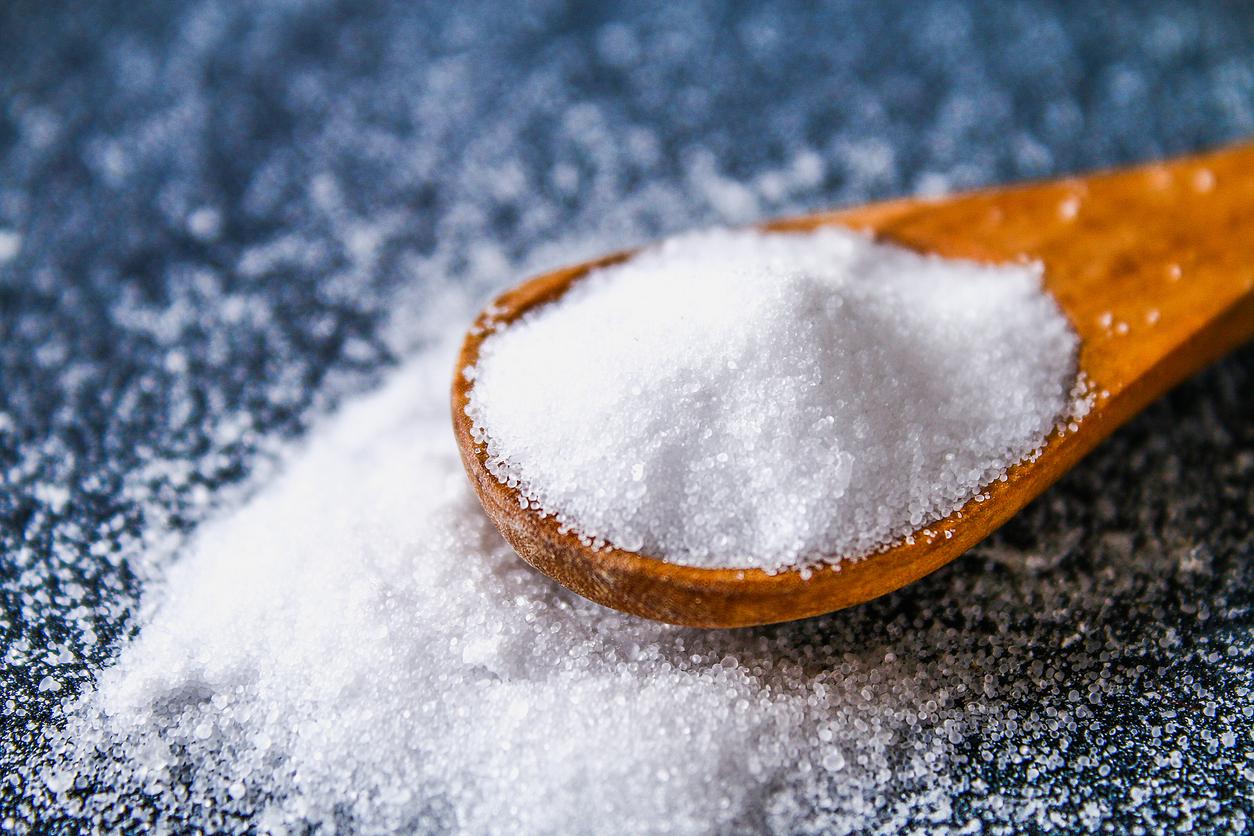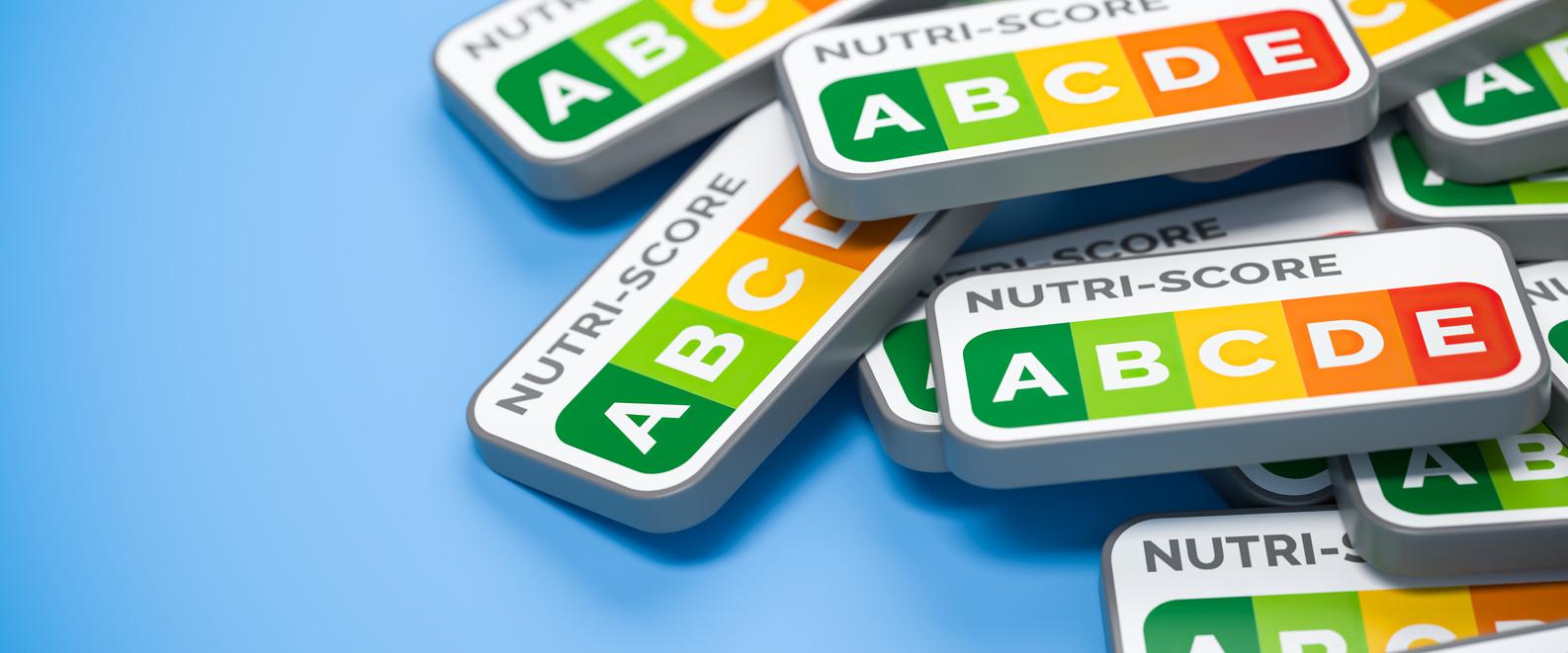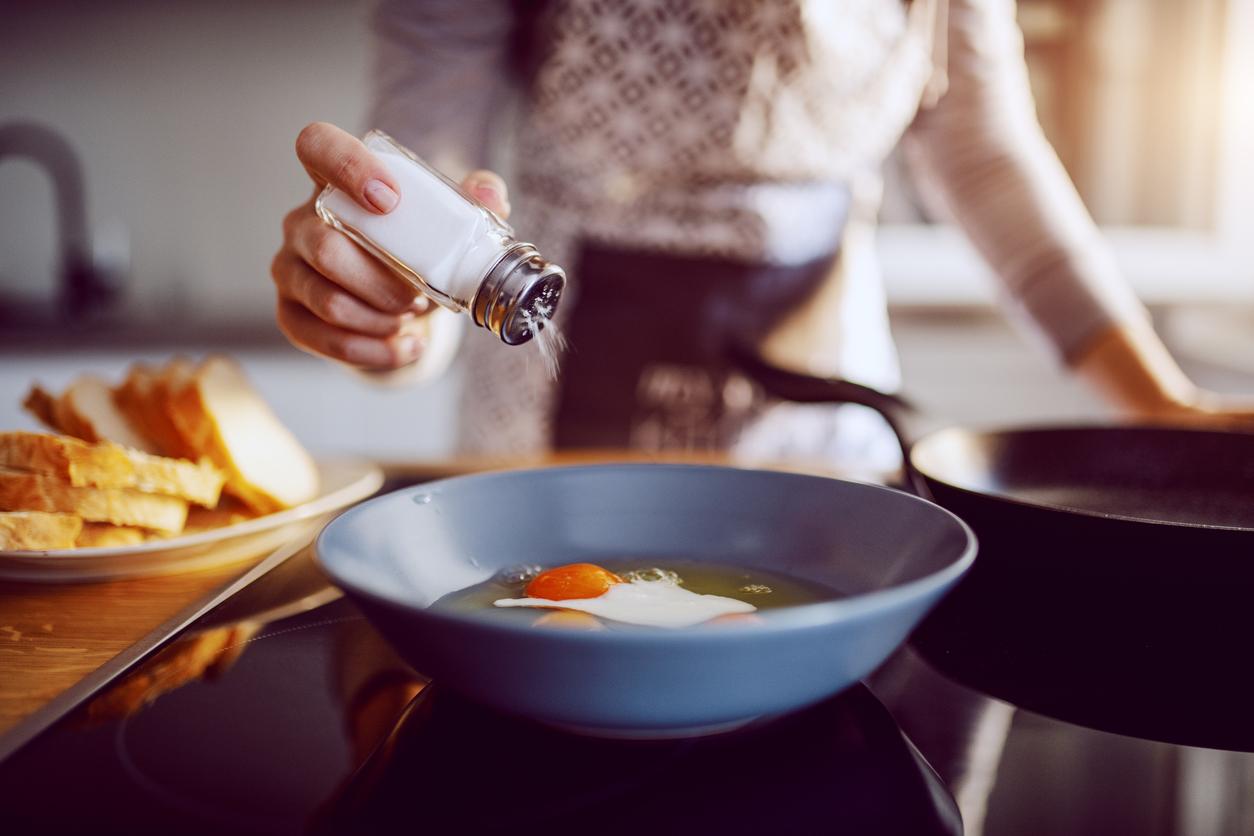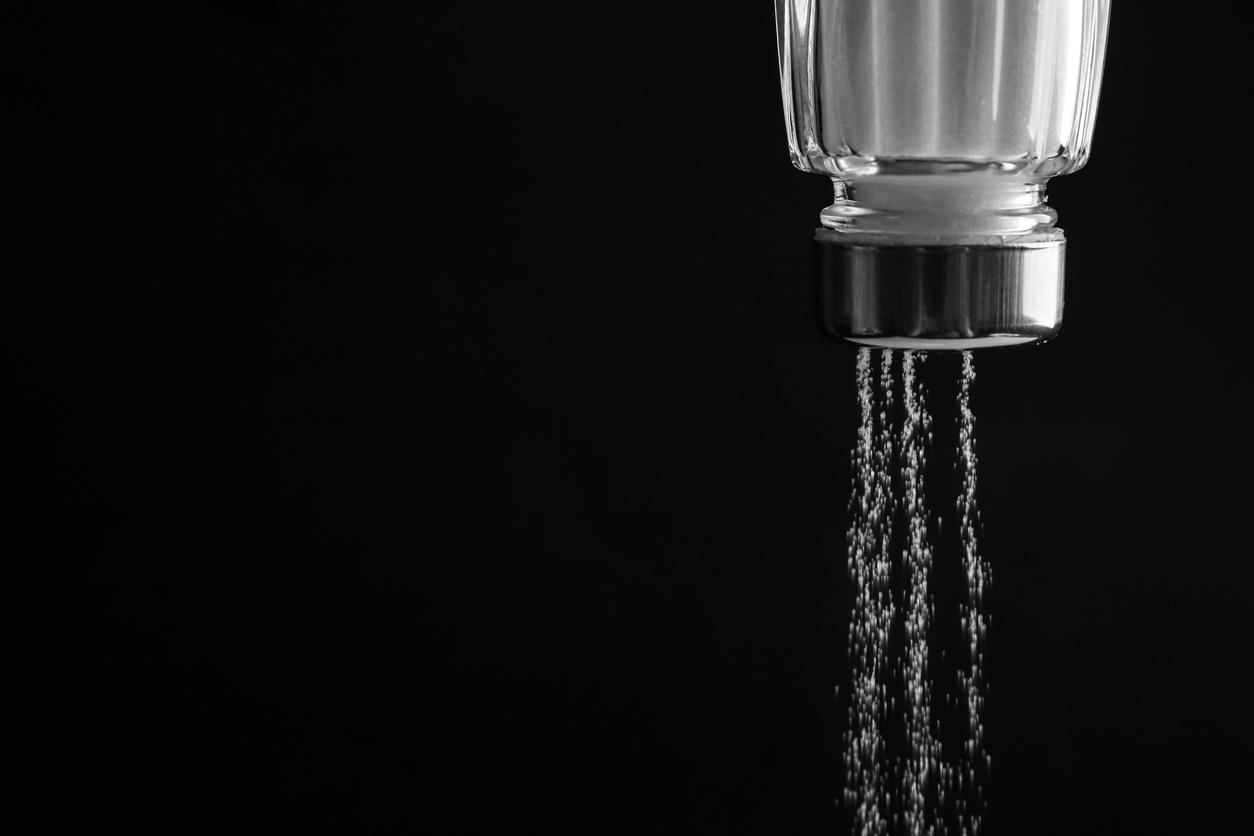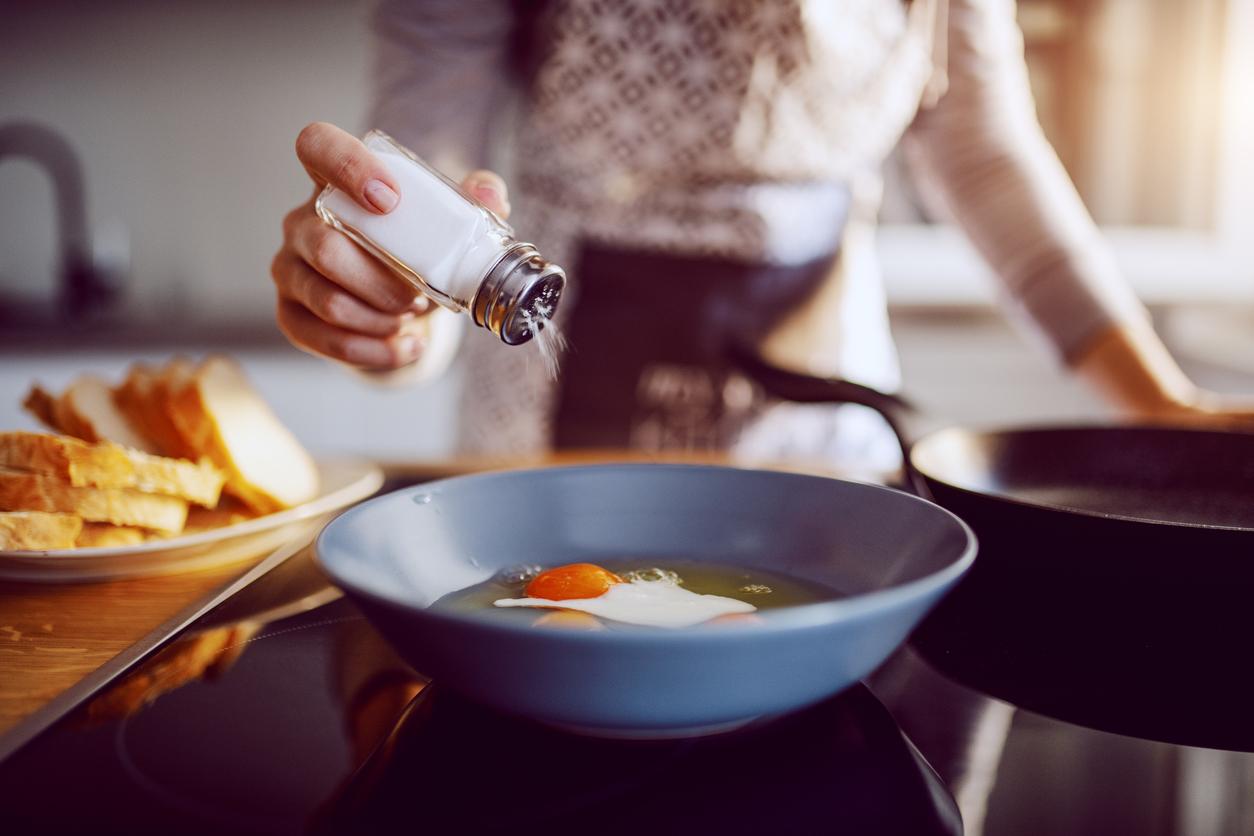Even before using the salt shaker, it is very likely that you have already consumed more salt than the recommended daily allowance. Responsible are the so-called hidden salts, present in many industrial products. So, to avoid using even more salt when seasoning, choose other foods to give flavor to your dishes.
Cardiovascular diseases, kidney problems, inflammatory, diabetes or hypertension can be the consequence of too much salt consumption. The World Health Organization (WHO) also recommends do not exceed 5 g daily.
However, be careful not to become obsessed: salt remains an excellent source of minerals. In particular, it helps our body to retain the water it needs, as well as to maintain calcium and minerals in the blood.
How to reduce your salt intake?
Before proceeding with the purchase of a product at the supermarket, do not hesitate to check the label of each product. Salt can be hidden under different names such as sodium, bicarbonate or glutamate.
Rethinking the way you buy and cook will allow you to discover new flavors. Choosing to replace your salt intake with substitutes rich in taste and above all in benefits remains quite simple. Sophie Janvier, dietician and nutritionist, highlights “THE spices and the aromatic herbs [qui] are all interesting alternatives to add flavor to dishes”. In addition, THE“raw provide a significant amount of antioxidants and terpenes, which protect against cell aging and inflammation. The latter are rich in vitamins, antioxidants, fibers and minerals. Both bring varied flavors: enough to pleasantly stimulate the taste buds.”
For example :
- at the table, offer pepper and spices instead of the salt shaker
- replace mustard with horseradish
- use aromatic salt (mixture of salt with thymeof rosemary…)
- try it gomasio (Japanese condiment composed of 5% salt and 95% roasted sesame seeds)
Source :
- The gentle way to eat better, Sophie Janvier (dietician and nutritionist), ed. Leduc, 2022


















